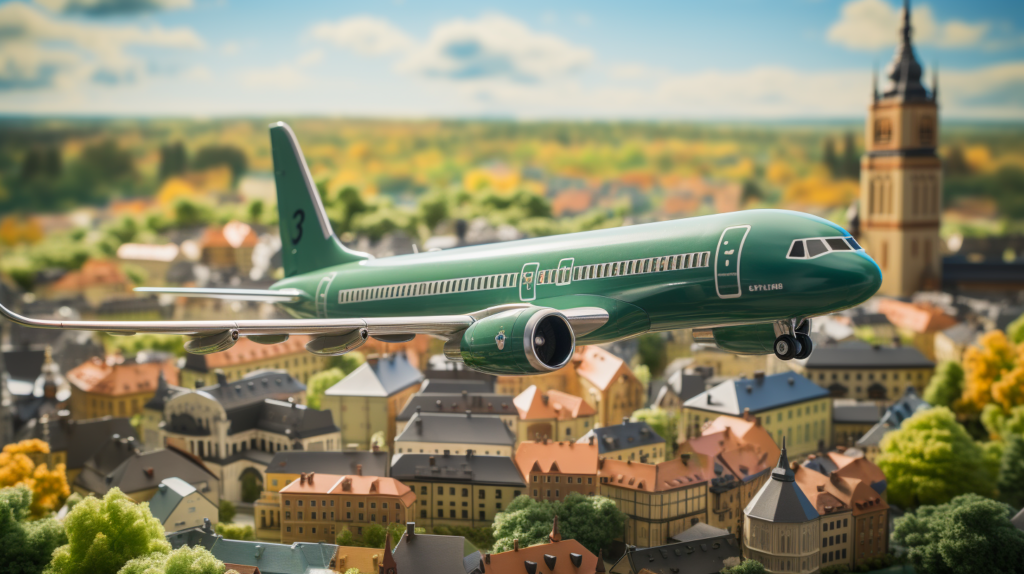Planes, Trains or Automobiles? Lessons from a 1250km train journey across Europe.

In June 2022, as I waited to board my flight home to the UK from Realize Live in Berlin, I felt like a fraud. I had spent the previous three days having intense conversations with engineers, all of whom were dedicating much of their professional life to designing practical solutions to the climate crisis.
And yet almost all of us had arrived in Berlin by means of kerosene guzzling aircraft, contributing to the very problem that we were trying to solve.
I immediately made a personal commitment that I’d travel to next year’s conference – Realize Live Munich – using the train.
On paper this seemed like an uncontroversial choice, after all, up until the advent of low-cost air travel making this journey by rail would have been the default choice.
However, my decision was met by howls of derisive laughter from my continental colleagues (especially from Belgians and Germans) all of whom counselled me against it. “It’ll be too expensive”, “you’ll miss your connections”, “it’ll take too long”. One colleague me in great detail how he had been stuck on a German train for six hours without any sanitation facilities on his way back from Berlin.
I listened very carefully to my colleagues. And then ignored them.
This blog is a summary of my experiences travelling from my home in England to Munich by train. If you are interested in the details you can read a blow-by-blow commentary of the journey to and from Munich you can read my Twitter feed:
Journey Time
Obviously flying would have been quicker. A direct flight between a London Airport to Munich takes less than 2 hours. By comparison, the quickest journey time by train from St Pancras station to Munich Hbf is 8.5 hours.
However, this is rather deceptive. I don’t live close to an airport, but I do live less than a kilometre away from a local railway station. So when comparing journey times you also have to include travel times to the international railway station, and negotiating the complexities of travel such as customs, immigration security and spending lots of money on unfeasibly large Toblerones in the Duty Free Shop.
Reasonable estimates of these times (including arriving at the airport 2 hours before, or the station one hour before a Channel Tunnel crossing inflate the journey times considerably:
Even with these adjustments – the train journey takes about 6 longer than flying. For the round trip that’s half a day more travelling, which might seem difficult to justify.
In reality the train journey took even longer. My outbound journey was delayed by an hour, and my inbound journey by two hours, after thunderstorms damaged some of the signalling, which closed lines and meant I missed connections. Although actually I anticipated the problems and switched to an earlier train which got me home earlier than planned. Trains are more flexible than aircraft when things go wrong.
Productive Journey Time
During my train journey I read, I wrote a blog, I mixed the audio for podcasts, I had a snooze, I played Zelda on my Nintendo Switch. Almost all the hours on a train are potentially productive.
By comparison a European flight is really lots of short journeys and waits, none of which afford you much time to do anything productive. Aeroplanes are cramped. Airports are crowded. Almost no-one does much productive work on a car journey to or from the airport.
You could argue that – since the plane is 5 hours quicker than the train – you could use the time you save productively. My experience is that (on the way home at least) travel days are just travel days and that I don’t do anything much at the end of the journey (or before it).
The minimum car driving time is just over 12 hours, but that’s assuming that you hit the train that will carry your car through the Channel Tunnel exactly on time. You need to add an hour to check in and get loaded onto the train. Which takes it up to 13:20. You’d probably have to take extra breaks for fuel and toilets so I reckon it’s at least 14 hours. In an EV the charging times would make that even slower. Driving time is pretty unproductive although I do like listening to the Engineer Innovation Podcast, or audiobooks.
Journey Cost
As with calculating the journey time, calculating the cost is rather deceptive, because there are hidden costs that are easy to miss. When I was booking my train tickets I was nervous, because at around £500 they looked a lot more expensive than the £290 return flight I was being quoted by Lufthansa. I told lots of people how much more expensive trains were (compared with flying) and I genuinely wasn’t looking forward to filing my expense report for the trip.
But airline fares are misleading. The cheapest fares often do not include luggage (which I needed here because I was lugging a load of audio recording equipment). They also do not include the cost of getting and from the airport and possibly parking there too.
The issue here is that big noisy airports are necessarily located in remote locations away from human habitation. Away from your destination and (unless you are unlucky) away from your home.
The cost of driving is also similar. It costs about £200 to get through the Channel Tunnel, and the UK Government sets the mileage rate that you can claim on expenses at about £0.45 a mile.
Obviously there is some flexibility with all these costs, you can usually always pay less, if you are happy to go slower and / or suffer more. On vacation you might be able to enjoy the intermediate stops, but not on business travel.
Environmental Cost
We need to be honest. No form of long-distance transportation is completely “guilt free” when it comes to the environment. Even though all the trains that I took were electric, in most European countries electricity production still involves the combustion of some fossil fuels, although that amount is continuously reducing as more and more “green” sources of electricity come onboard.
The net result of taking the train is that I saved about 455kg of greenhouse gas emissions. Which is about 6.5% of the average per-person European CO2e emissions.
To put these numbers in context, the average European is responsible for about 7 tonnes of CO2e greenhouse gas emissions every year. With the return flight emitting about 0.5 tonnes of CO2e one European flight a month would blow the entirety of your “carbon budget”.
I could have plotted similar graphs for NOx and particulate emissions, both of which show a similar distribution. It’s pretty clear that flying is much more polluting in every sense than taking the train.
The (Triple) Bottom Line
Although the train journey takes about 12 hours longer for the round-trip, on each of those hours you’ll be saving about 38 kg of CO2e emissions. Not bad for half a day of staring out the window. If you travel a lot, for business or vacation, then taking the train instead of flying is an easy way of reducing your own environmental impact.
It really comes down to an adjustment in attitude. An era of cheap air travel has made us all adopt a “get there now” attitude in we endure temporary discomfort for a few hours extra at our destination, rather than indulging in (and enjoying) the journey itself.
I will absolutely be taking the train again. Although it has to be said that I’m no longer a regular business traveller and that all those “extra 12 hours” add up when you are travelling frequently, (although I’d question how many people have to actually do that in a carbon conscious “Zoom enabled” world).
If you are interested in the logistics of train travel in Europe, I enthusiastically recommend The Man in Seat 61:





